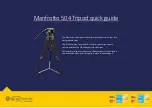
29
Fuel ECO Inst & Ave Digital:
These are the same values as the ECO Inst & Ave graphs, but are given as the actual
numeric values for the user to see.
ECO Coach:
This value is simply the difference between your instant and average economy values.
If it is negative you are getting worse economy than your average and if positive then
you are getting better. How much worse or better is whether you are doing good or not.
Load %:
This is the vehicle’s reported Load % indicating the percent of peak available torque
in your vehicle.
“Money To Burn” Animation:
The 20 Dollar bill image signifi es your mileage improvements or losses in an animated
form. When the bill is all there and has no fl ames you are doing well. The more the bill
burns the worse you are doing. This feature it is a combination of your ECO Coach
value (positive or negative) and your smoothness value. It takes into account being
less than 35 MPH** (gives you a better value if you accelerate a little more below
35 MPH, but not too much). It penalizes you quite a bit for slamming on the brakes
(Deceleration).
Selecting the Menu Icon
prompts with the following options:
Enter Actual Fuel Economy:
Allows you to add the actual fuel economy you are getting so you can compare what
your vehicle is saving vs. what it was rated for. (Your vehicles actual mileage must
be either read from the vehicle’s dash board or hand calculated when the vehicle is
refueled).
Reset trip and fuel average:
Sets these gauges to zero to make sure the gauges are accurate at the time of use
**One of the best ways to save fuel is to not accelerate too quickly and not to use the
brakes. Not using the brakes more than needed is the overall best way to save fuel. If
you plan ahead and take your foot off the throttle long before you need to stop you
will save fuel.
Note:
that tests have shown that below about 35 MPH you should accelerate a little bit
faster because vehicles are not very effi cient below 35 MPH (on average). This doesn’t
mean you put the throttle to the fl oor. It just means get up to 35 MPH fairly quickly and
then accelerate more gently above that speed.
NOTE:
Several vehicle PID’s are required for this application to work properly.
Mileage Mentor may not work on some early OBD-II models that do not provide the
appropriate PID information from the vehicle’s engine controller.
















































